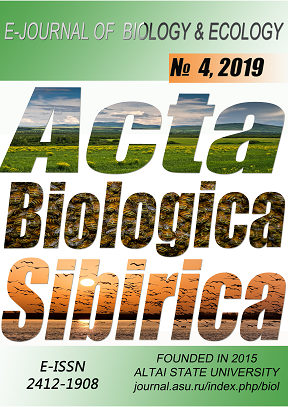Abstract
A new species of the genus Chrysina Kirby, 1828 is decribed from Panama. Chrysina valentini sp.n. is related to Chrysina tricolor (Ohaus, 1922) and Chrysina optima (H. W. Bates, 1888) in morphology and mtDNA COX I molecular marker. Three related species differ in elytra colour, elytral striae, and number of tubercles on foreleg femur. The morphological divergence of the compared species is supported by distances in mtDNA COI molecular marker.
References
Bates HW. 1888. Insecta. Coleoptera. Vol. II. Part 2. In: Pectinicornia and Lamellicornia. Salvin O, Godman F du Cane. Editors. Biologia Centrali-Americana. R. H. Porter, London. p 1–432.
Folmer O, Black M, Hoeh W, Lutz R, & Vrijenhoek R. 1994. DNA primers for amplification of mitochondrial cytochrome c oxidase subunit I from diverse metazoan invertebrates. Molecular Marine Biology and Biotechnology 3: 294–299.
Hawks DC. 2017. Five new species of Chrysina Kirby (Coleoptera: Scarabaeidae: Rutelinae). Insecta Mundi, April 12, 1–12.
Moore MR, Jameson ML, Garner BH, Audibert C, Smith ABT, & Seidel M. 2017. Synopsis of the pelidnotine scarabs (Coleoptera, Scarabaeidae, Rutelinae, Rutelini) and annotated catalog of the species and subspecies. ZooKeys 666: 1–349. Doi: https://doi.org/10.3897/zookeys.666.9191
Morón MA. 1990. The Beetles of the World. Volume 10: Rutelini 1. Sciences Nat, Venette.
Ratnasingham S, Hebert PDN. 2007. BOLD: The Barcode of Life Data System (http://www.barcodinglife.org). Molecular Ecology Notes 7: 355–364. Doi: https://doi.org/10.1111/j.1471-8286.2007.01678.x/
Ratcliffe BC. 2002. A checklist of the Scarabaeoidea (Coleoptera) of Panama. Zootaxa 32: 1–48. Doi: https://doi.org/10.11646/zootaxa.32.1.1/
Rothschild W, Jordan K. 1894. Six new species of Plusiotis and one new Anoplostethus. Novitates Zoologicae 1: 504–507. Doi: https://doi.org/10.5962/bhl.part.24570
Sambrook J, Fritsch EF, Maniatis T. 1989. Molecular cloning: A laboratory manual. Vols. 1–3. 2nd Edition. New York: Cold Spring Harbor Laboratory Press, Cold Spring Harbor.
Tamura K, Nei M, Kumar S. 2004. Prospects for inferring very large phylogenies by using the neighbor-joining method. Proceedings of the National Academy of Sciences (USA) 101: 11030–11035. Doi: https://doi.org/10.1073/pnas.0404206101/
Tamura K, Stecher G, Peterson D, Filipski F, Kumar S. 2013. MEGA6: Molecular Evolutionary Genetics Analysis version 6.0. Molecular Biology and Evolution 30: 2725–2729. Doi: https://doi.org/10.1093/molbev/mst197.
Zubov AS, Ivshin NV, Titarenko AYu, Andrianov BV. 2019. Description of a new species of Chrysina Kirby, 1828 (Coleoptera: Scarabaeidae: Rutelinae) from resplendens group, based on morphological characters and mtDNA COX I molecular marker. Acta Biologica Sibirica 5(1): 71-76. Doi: http://dx.doi.org/10.14258/abs.v5.i1.5194/
Acta Biologica Sibirica is a golden publisher, as we allow self-archiving, but most importantly we are fully transparent about your rights.
Authors may present and discuss their findings ahead of publication: at biological or scientific conferences, on preprint servers, in public databases, and in blogs, wikis, tweets, and other informal communication channels.
ABS allows authors to deposit manuscripts (currently under review or those for intended submission to ABS) in non-commercial, pre-print servers such as ArXiv.
Authors who publish with this journal agree to the following terms:
- Authors retain copyright and grant the journal right of first publication with the work simultaneously licensed under a Creative Commons Attribution License (CC BY 4.0) that allows others to share the work with an acknowledgement of the work's authorship and initial publication in this journal.
- Authors are able to enter into separate, additional contractual arrangements for the non-exclusive distribution of the journal's published version of the work (e.g., post it to an institutional repository or publish it in a book), with an acknowledgement of its initial publication in this journal.
- Authors are permitted and encouraged to post their work online (e.g., in institutional repositories or on their website) prior to and during the submission process, as it can lead to productive exchanges, as well as earlier and greater citation of published work (See The Effect of Open Access).





